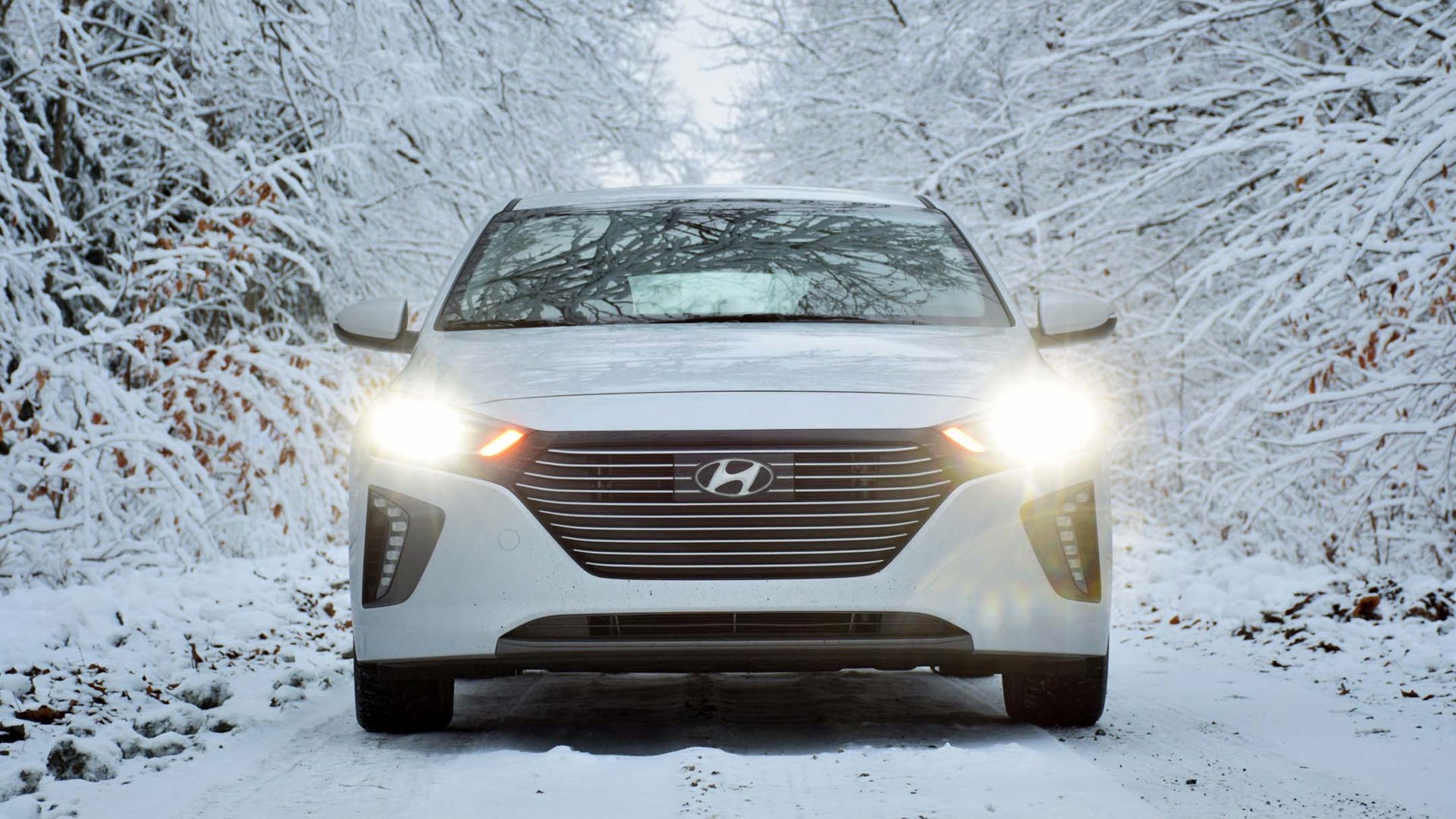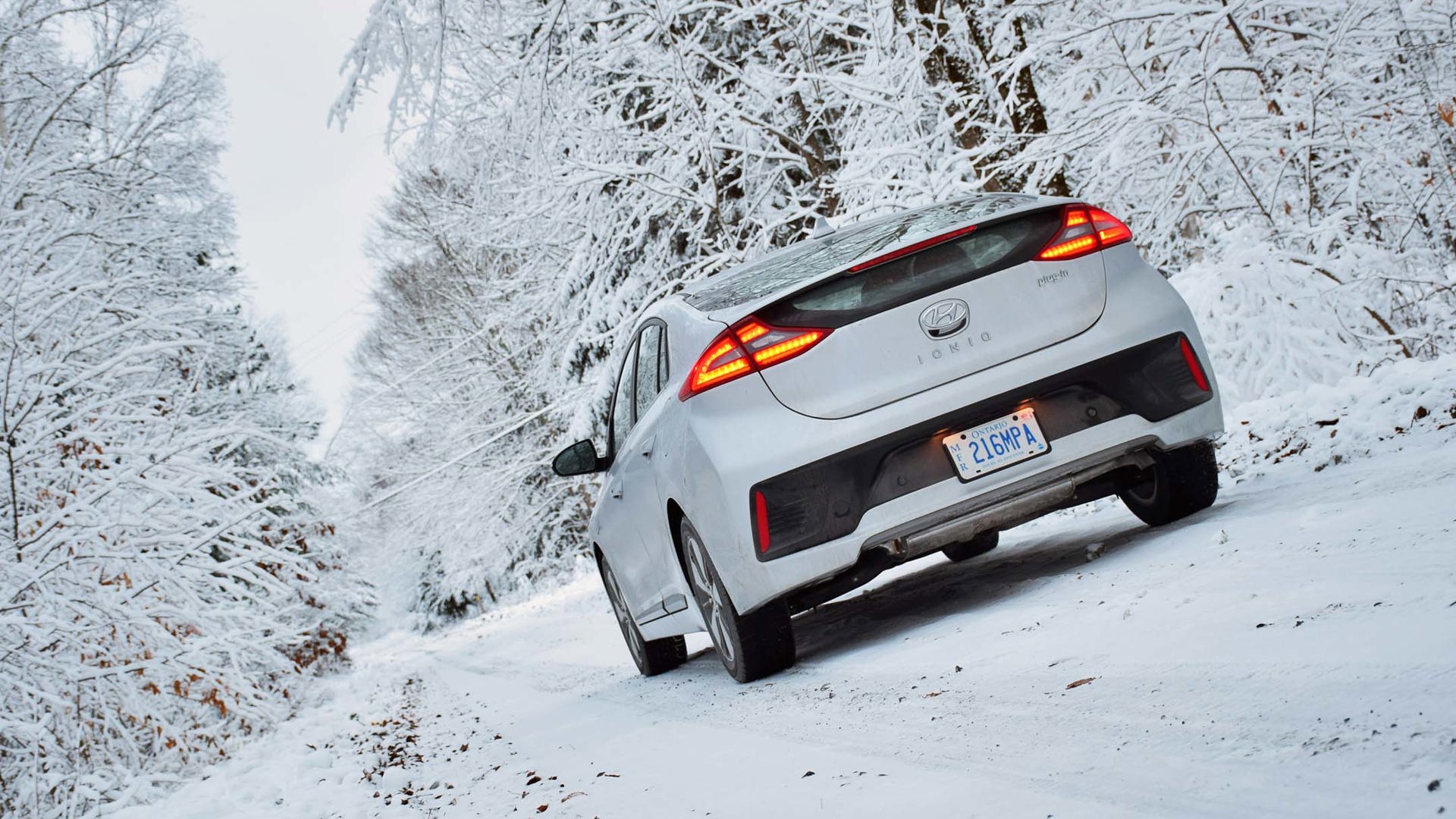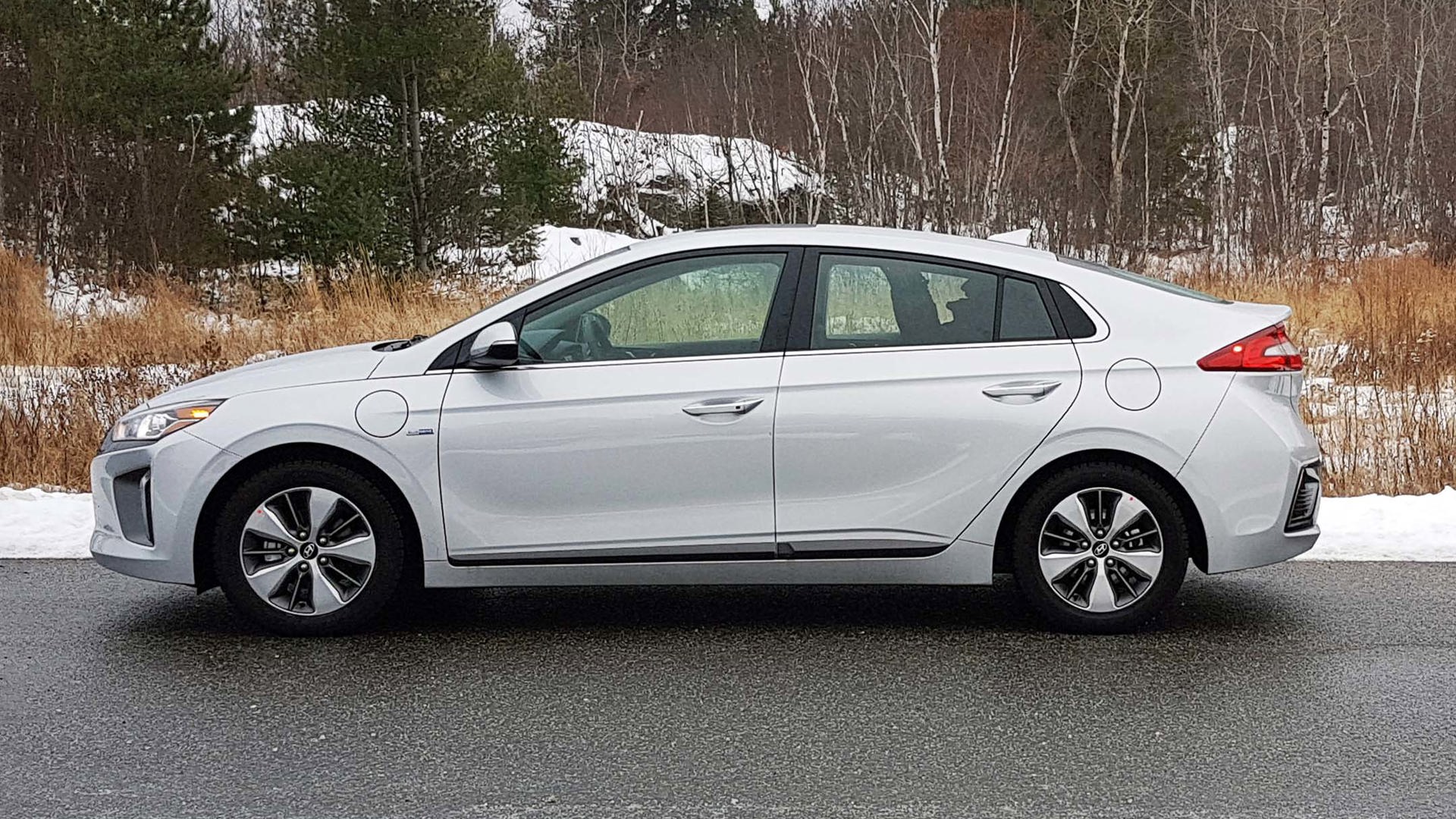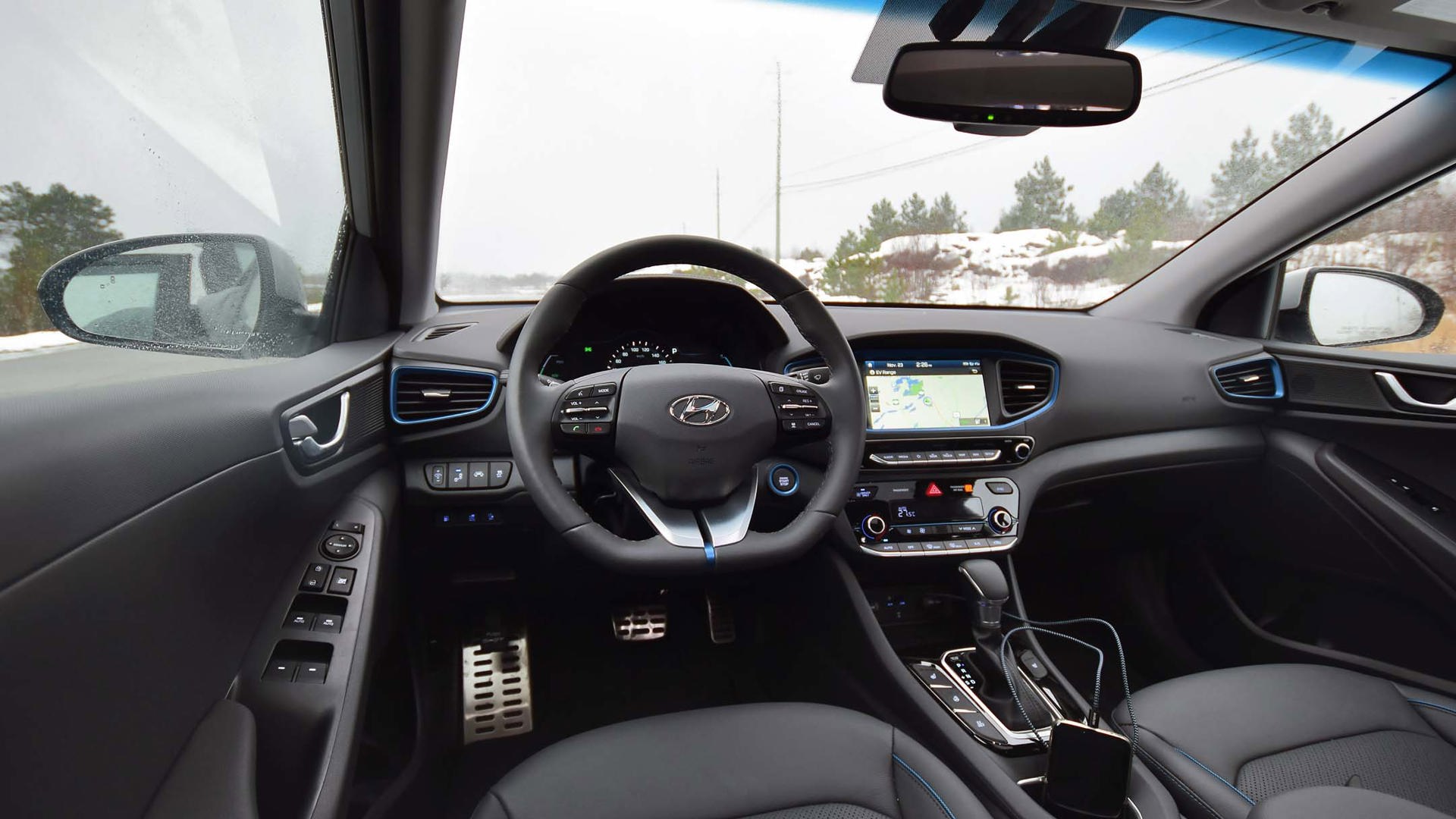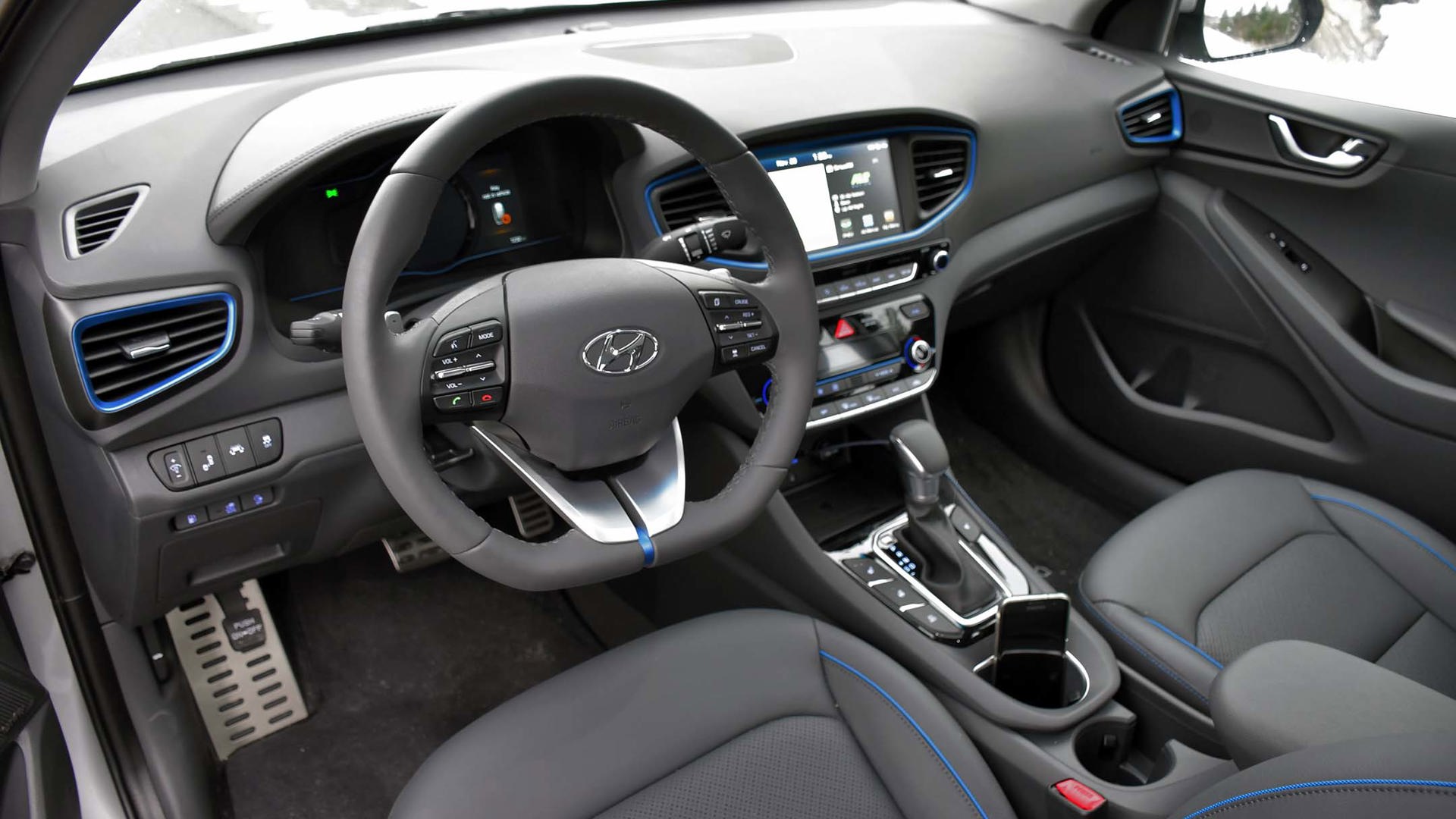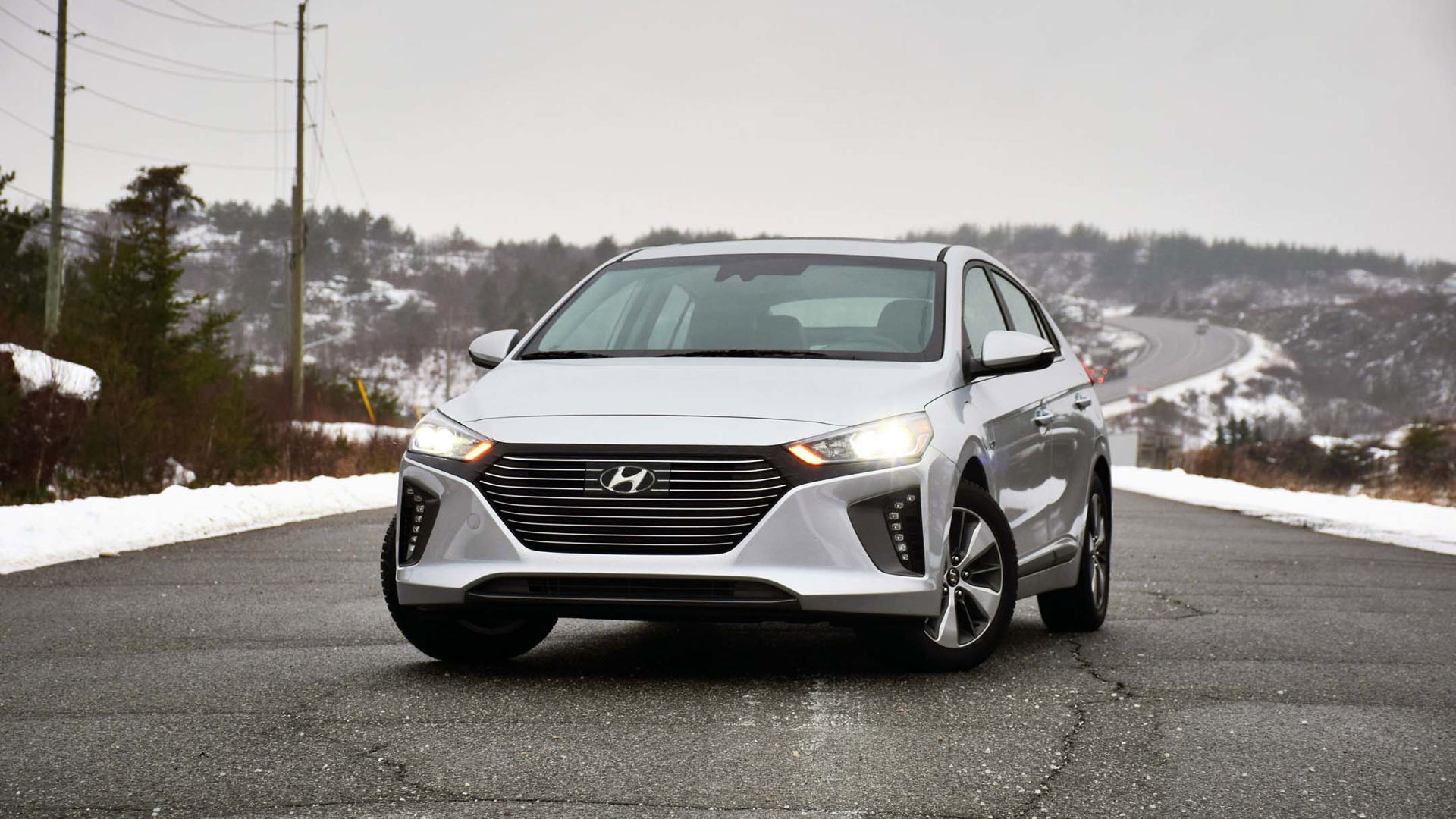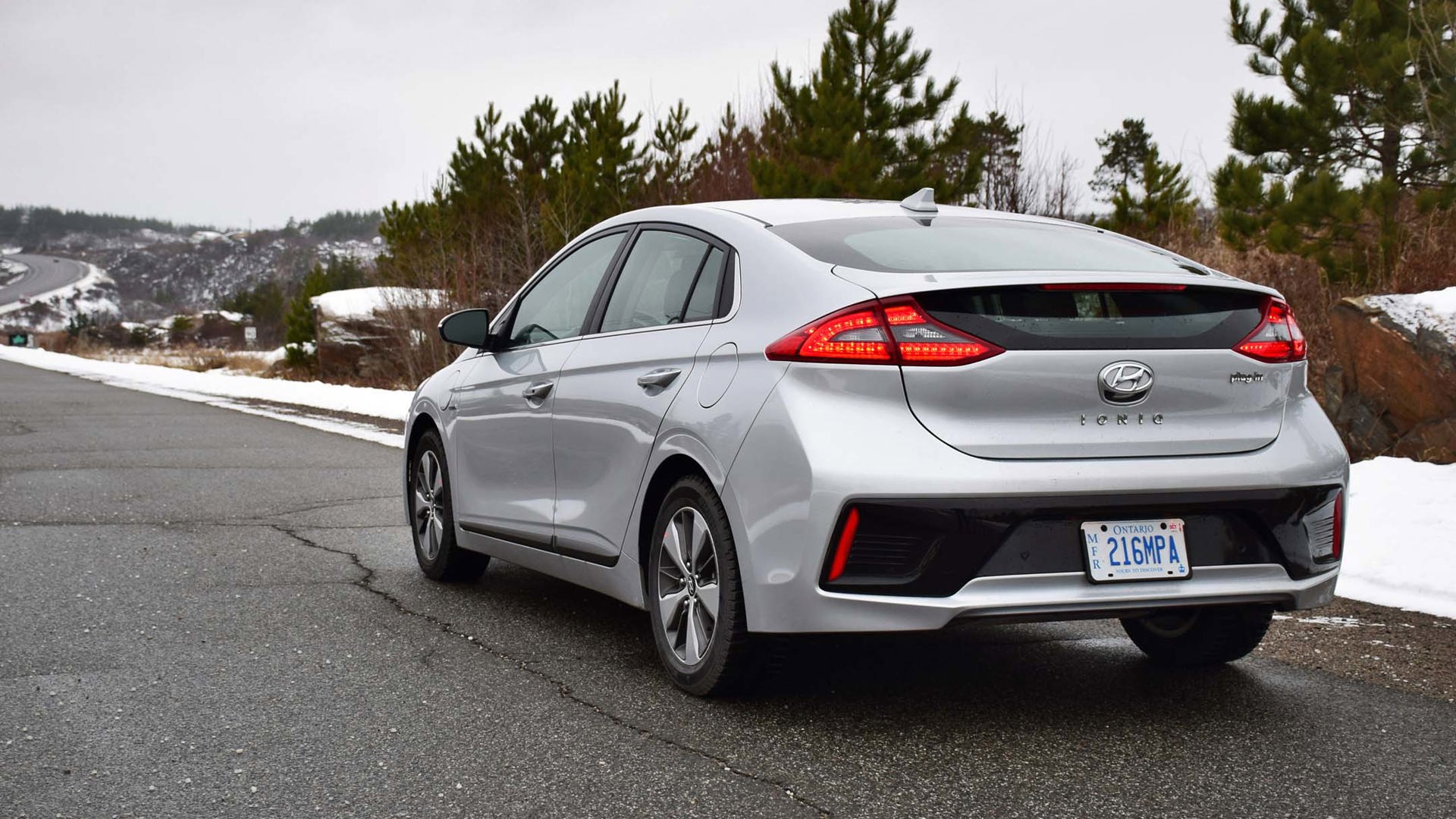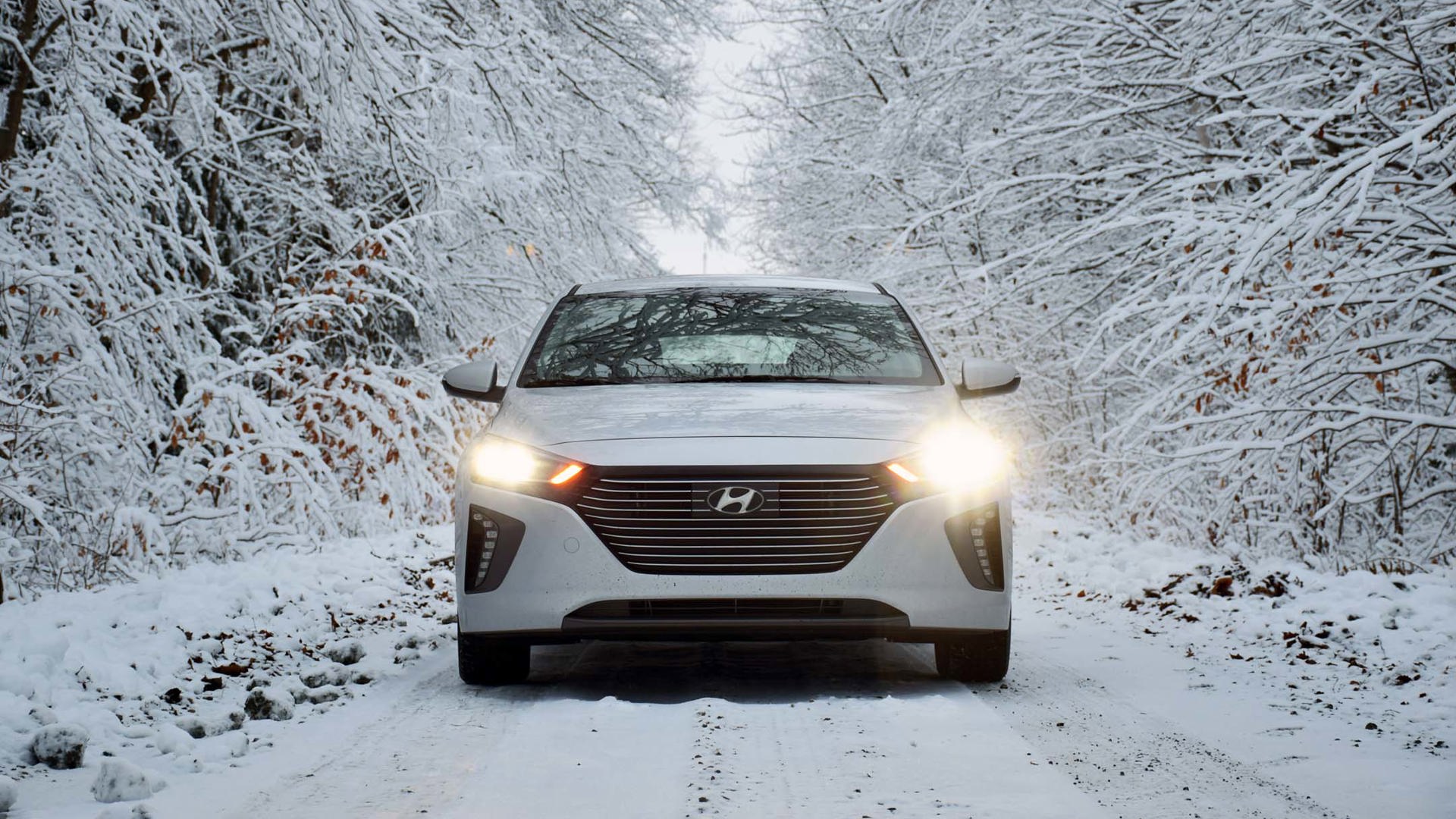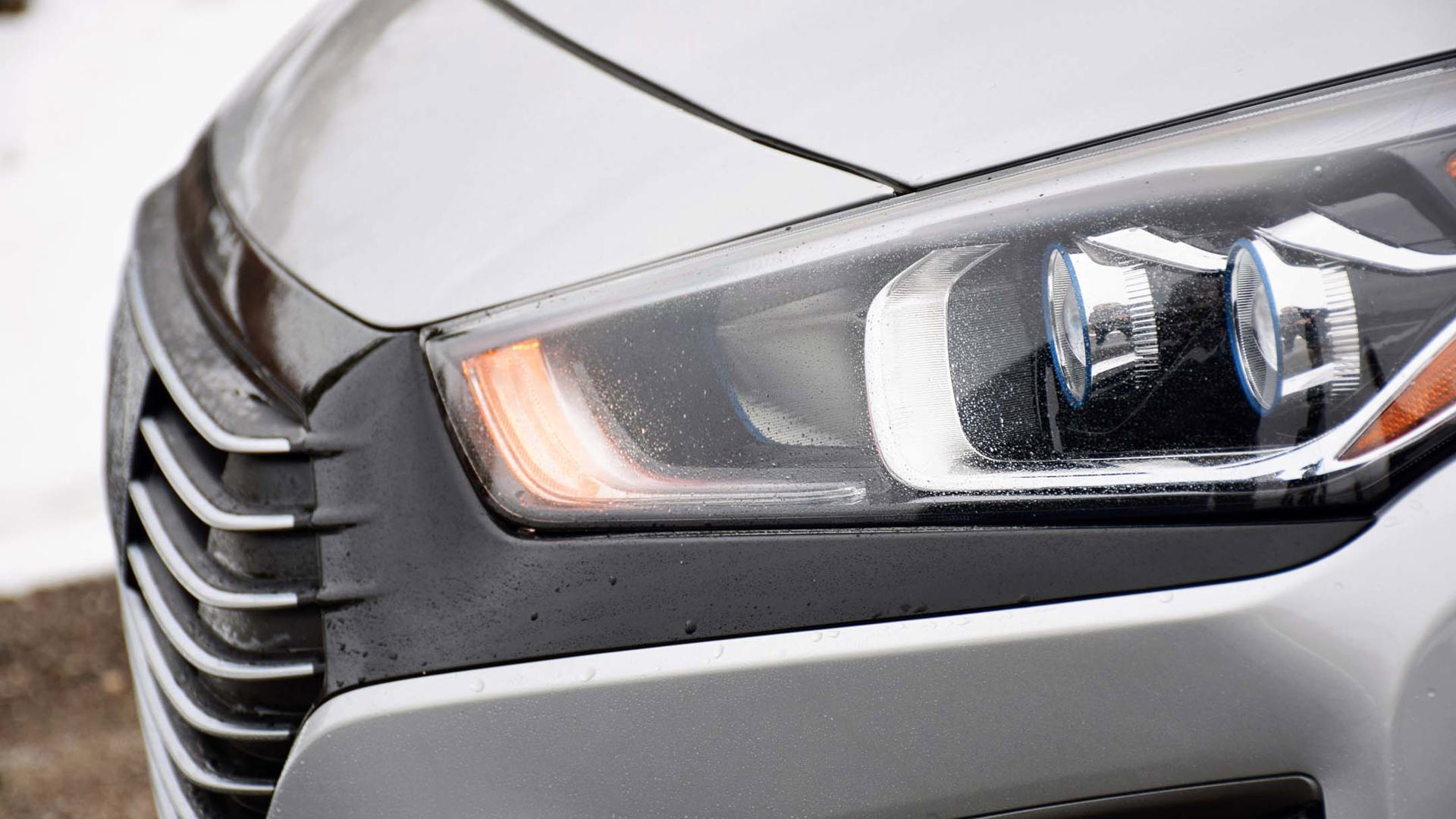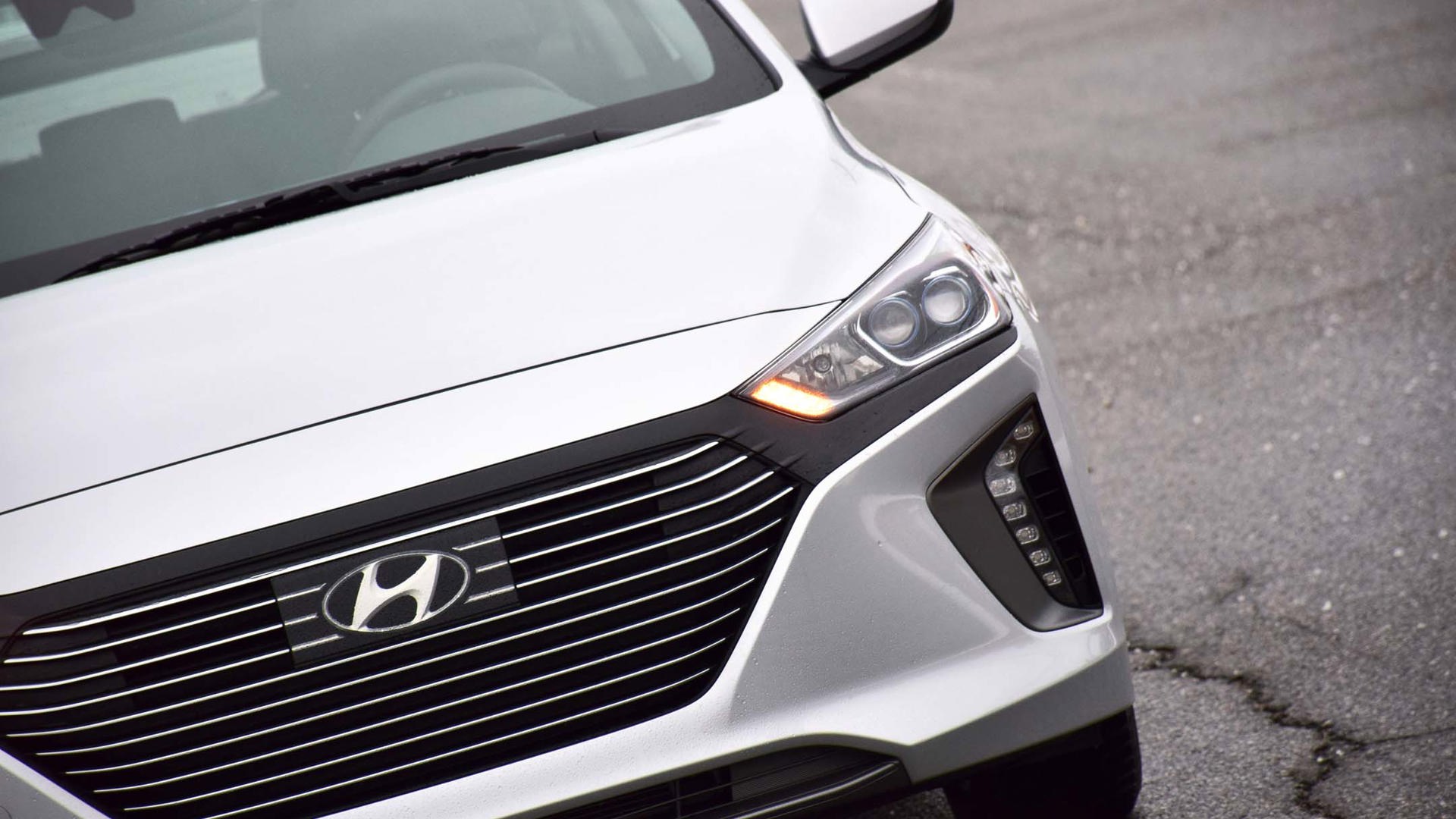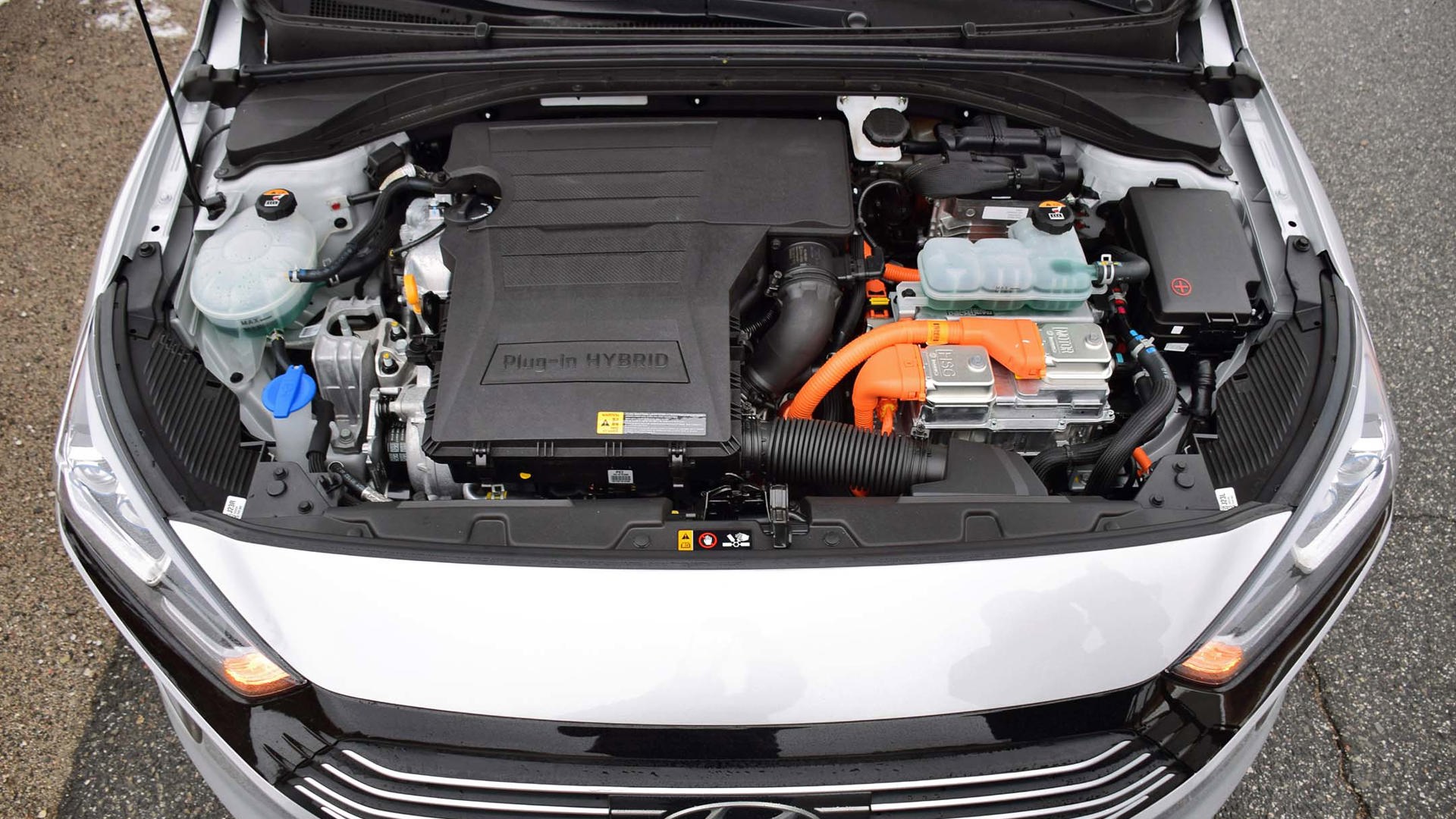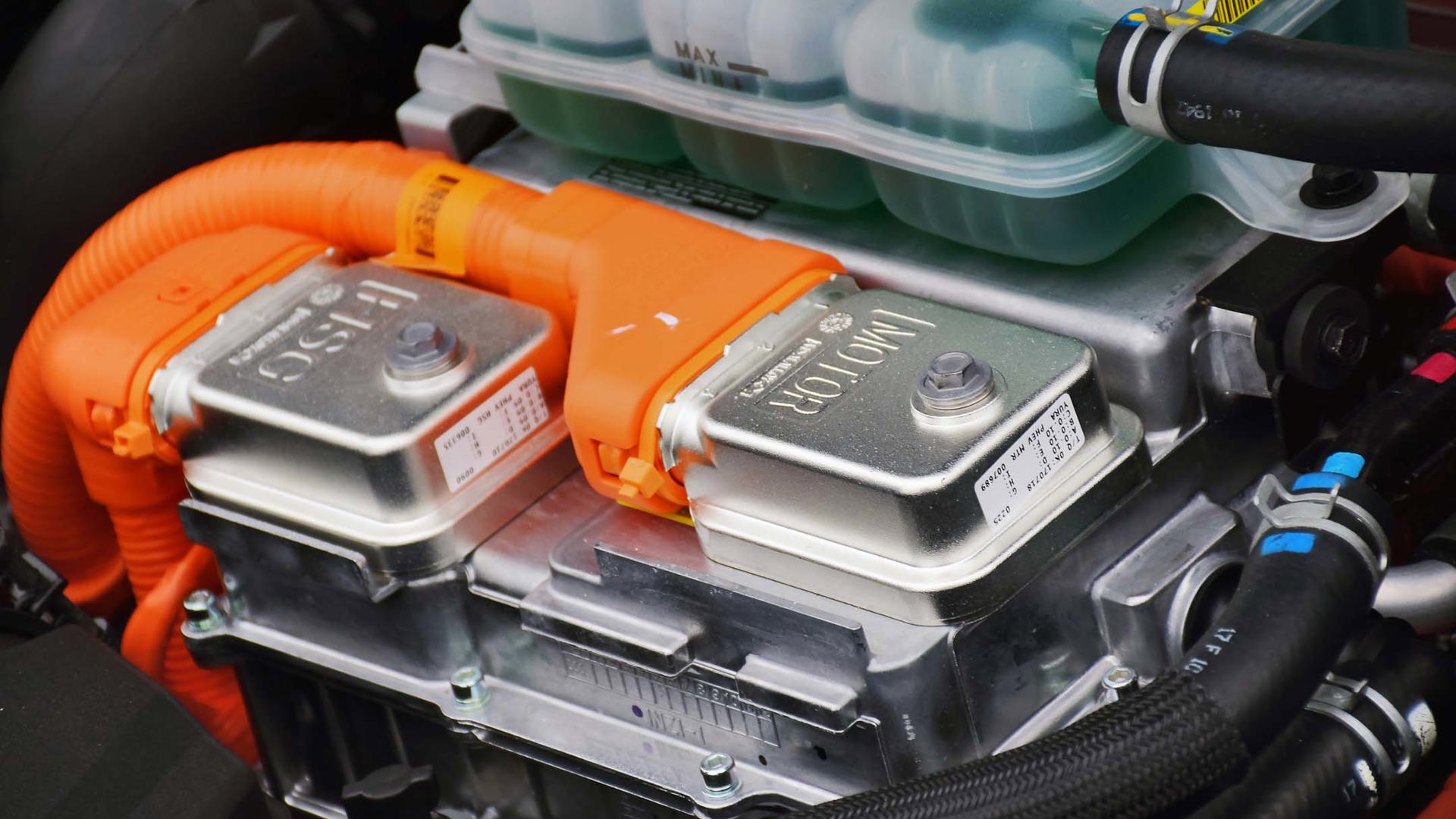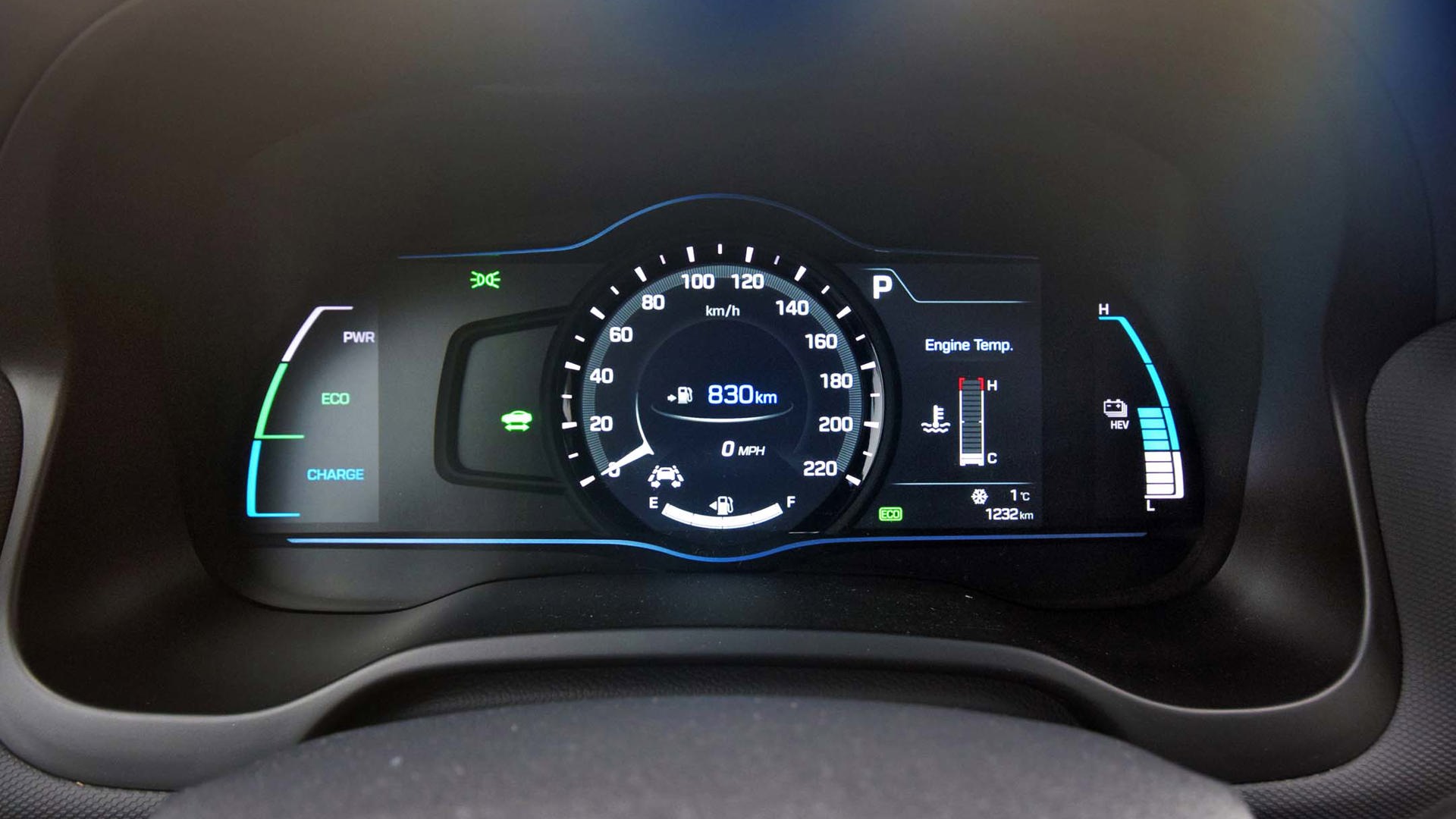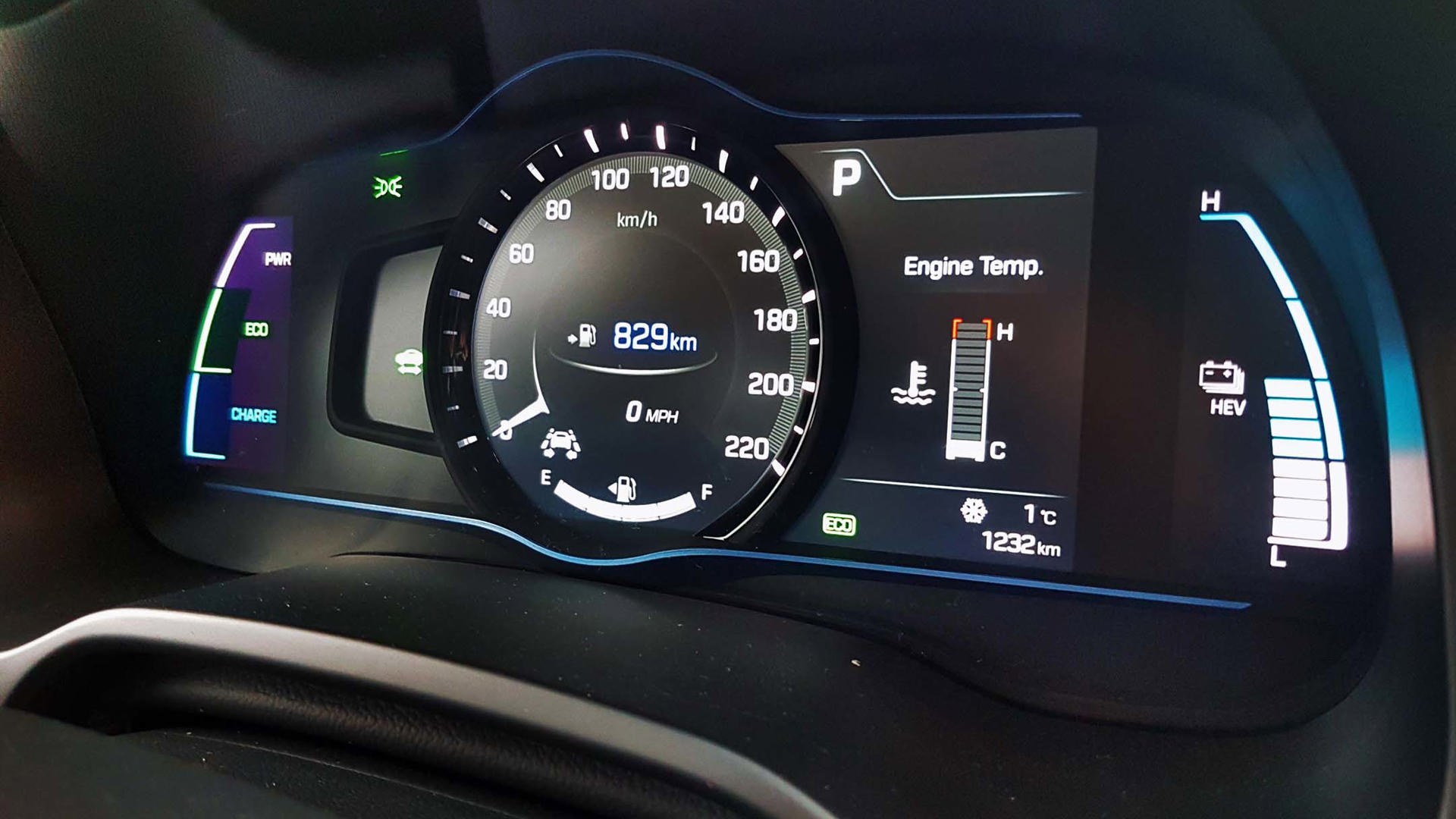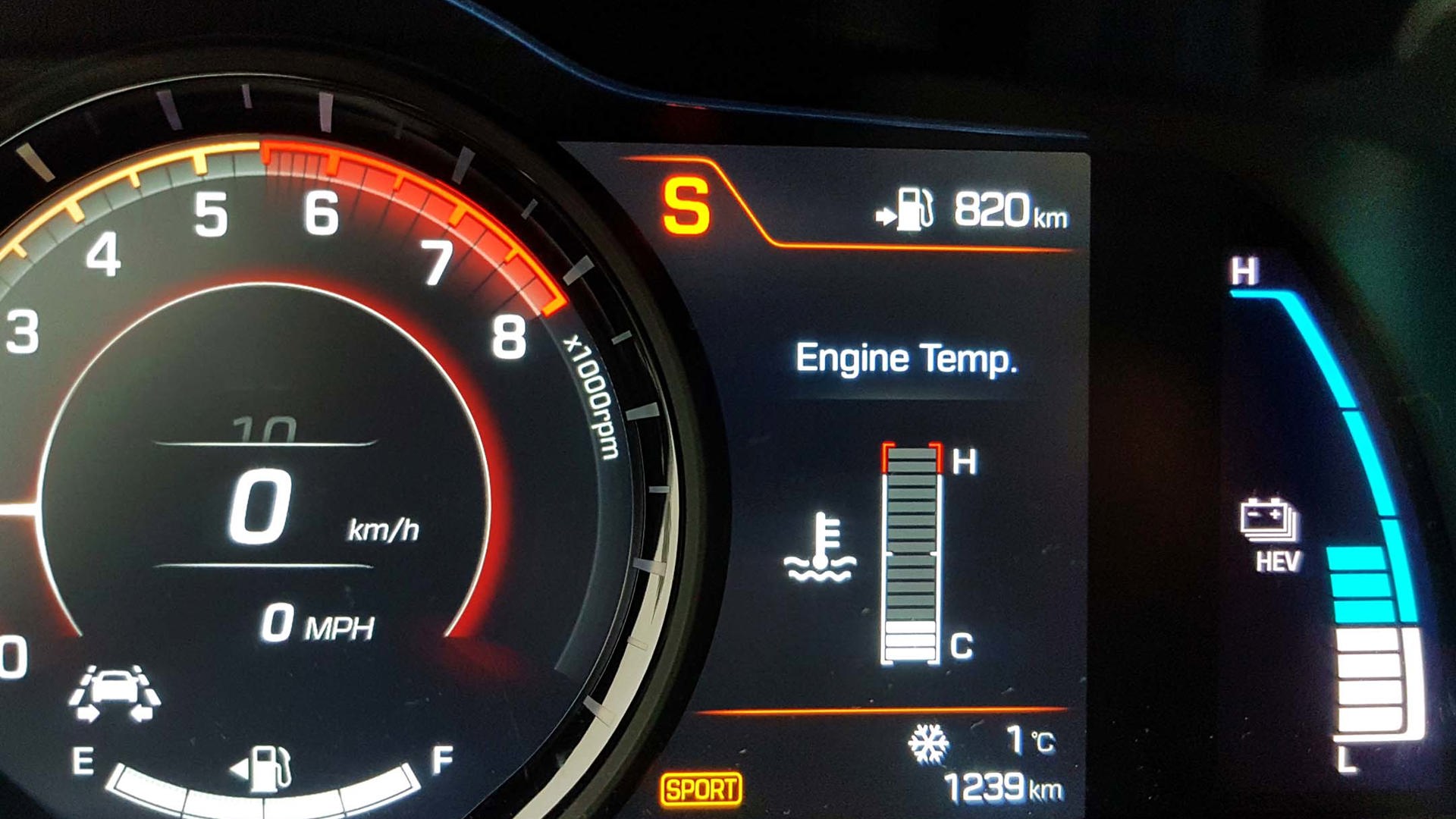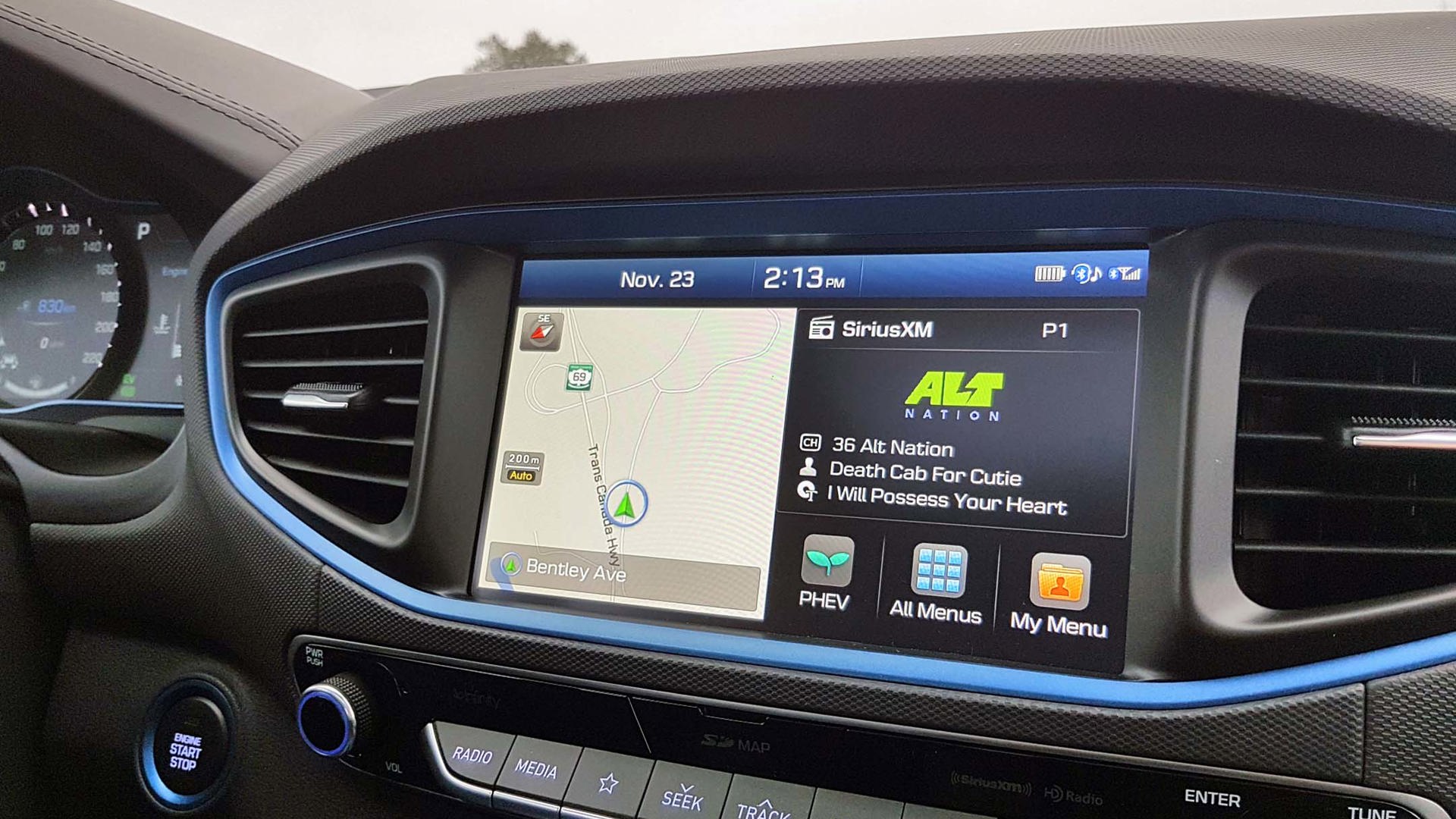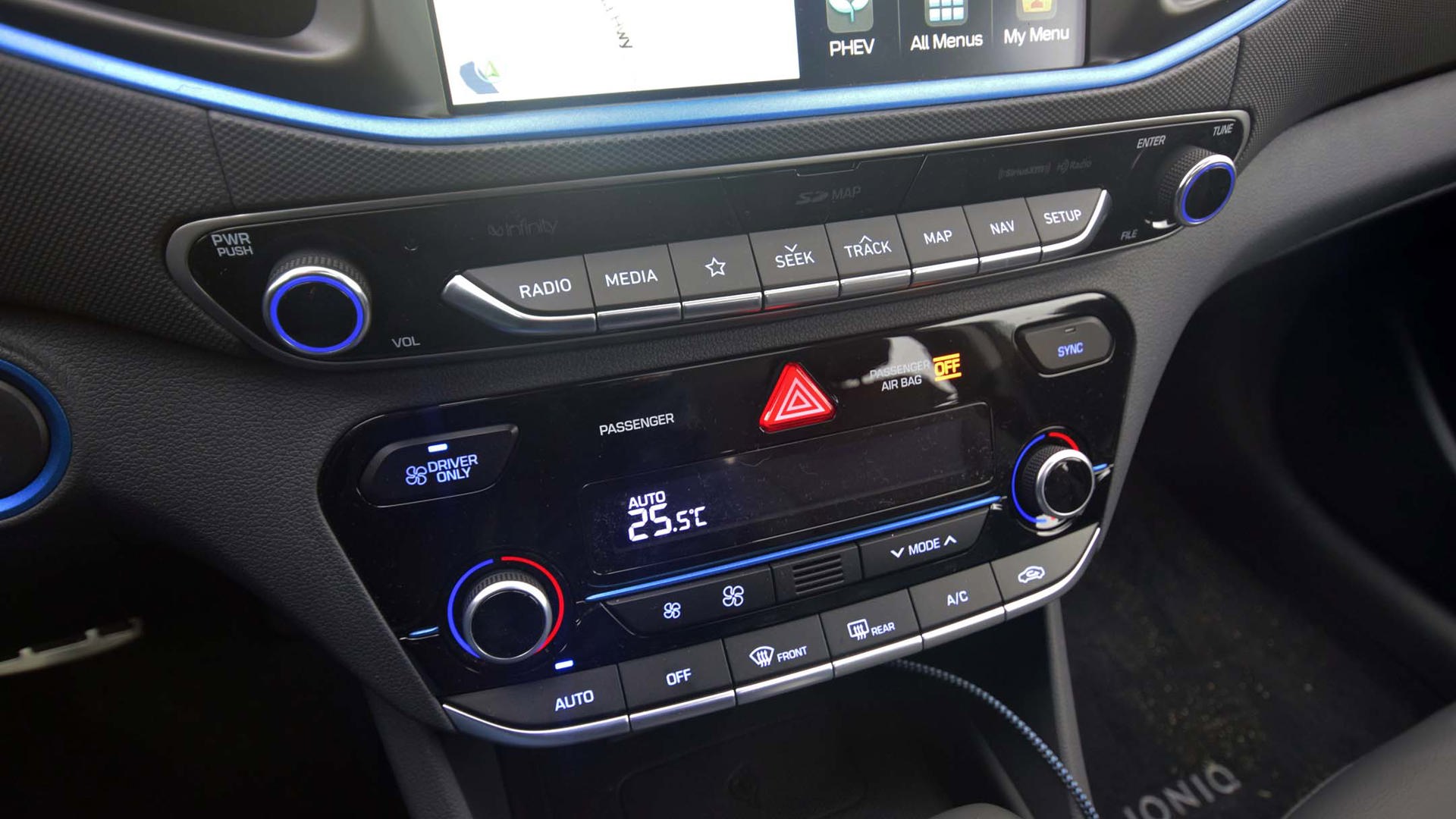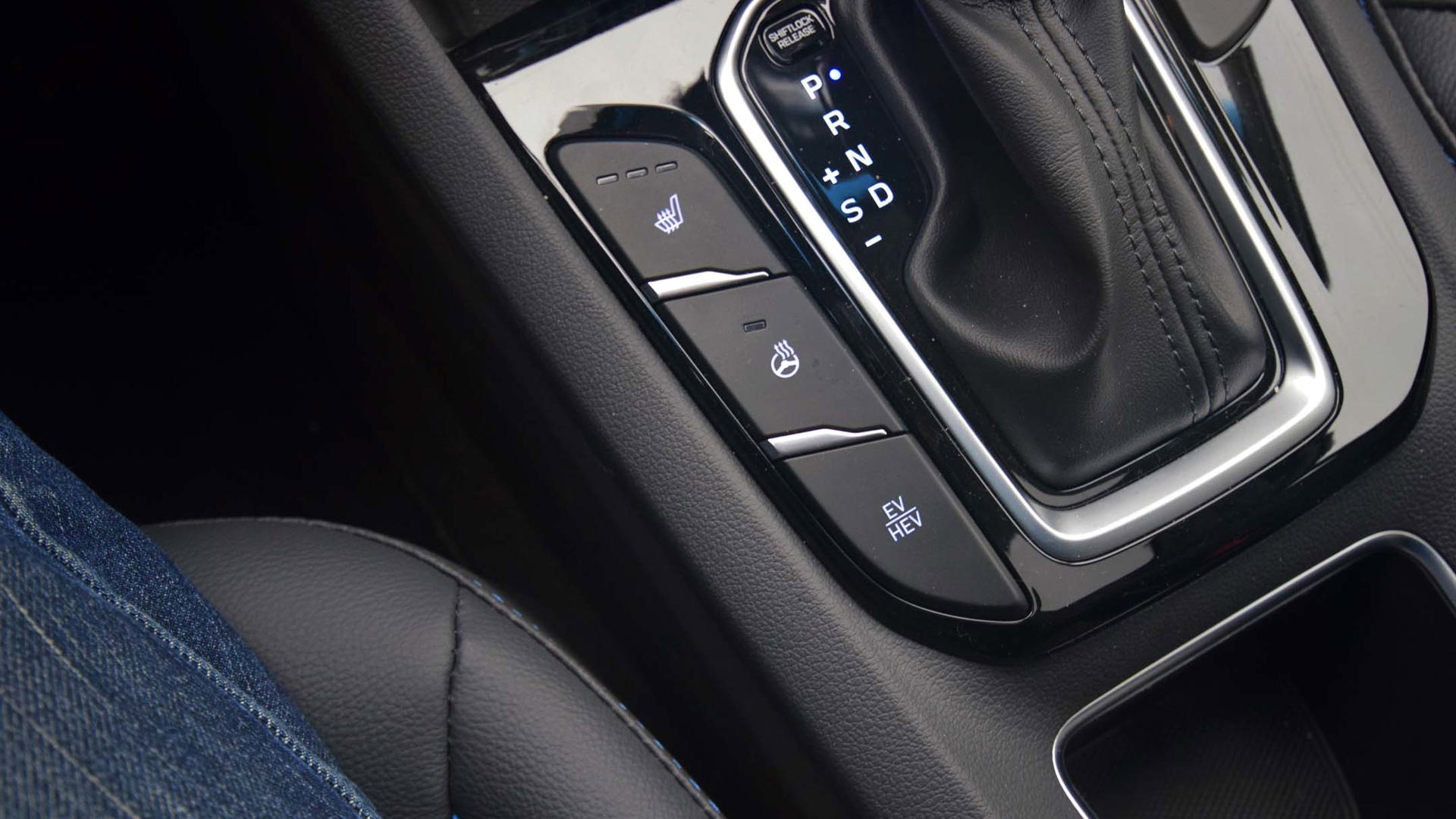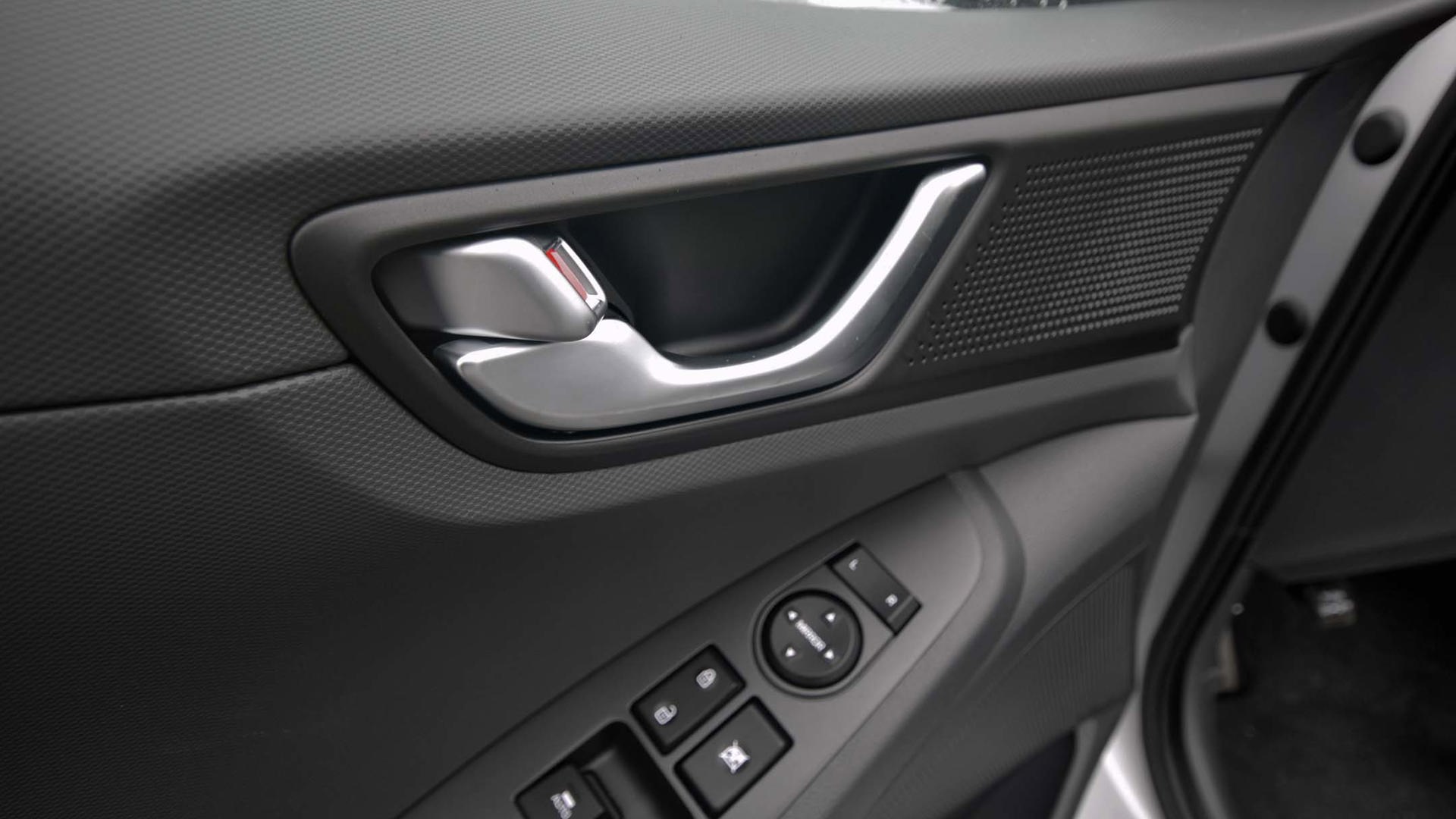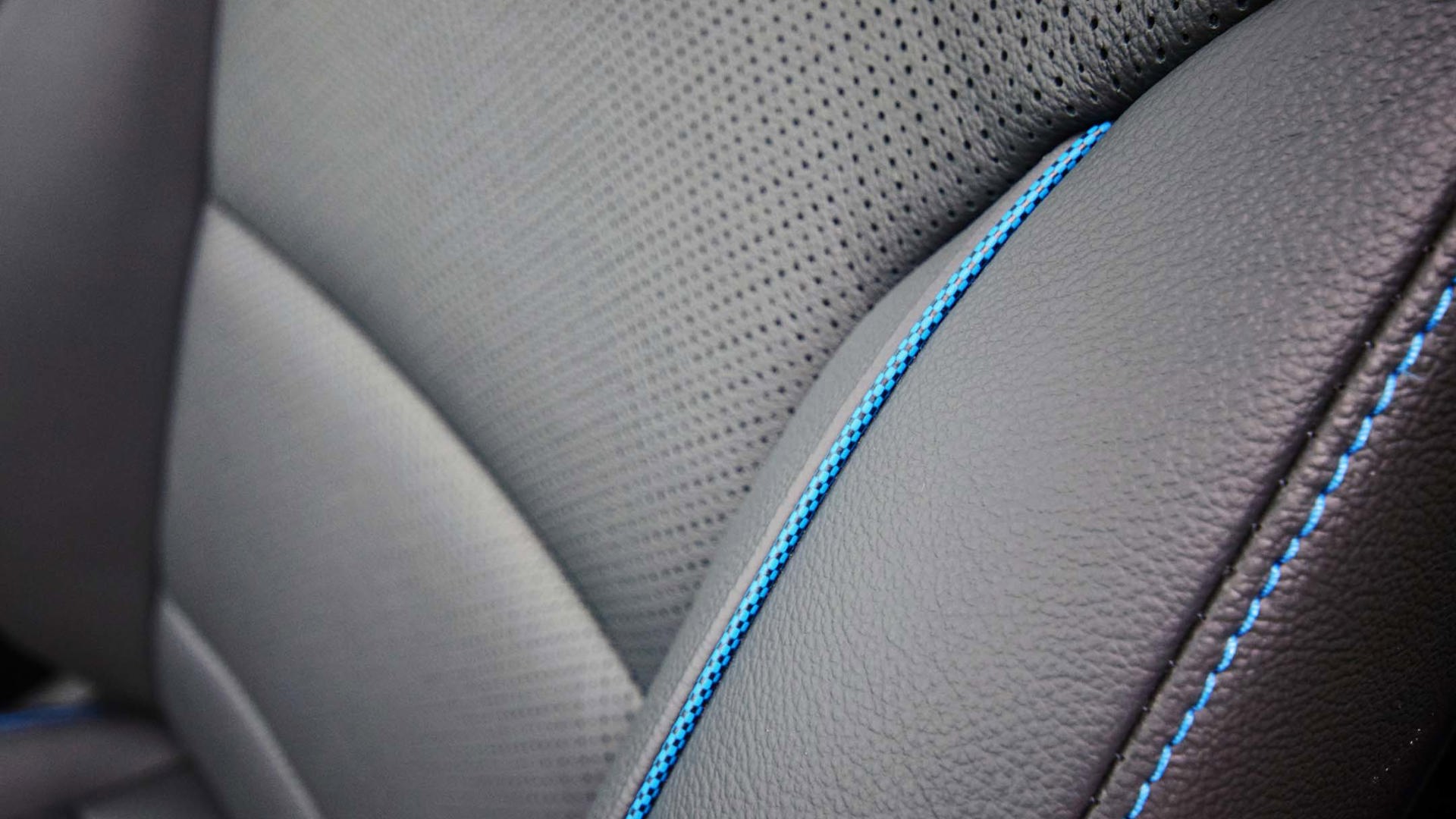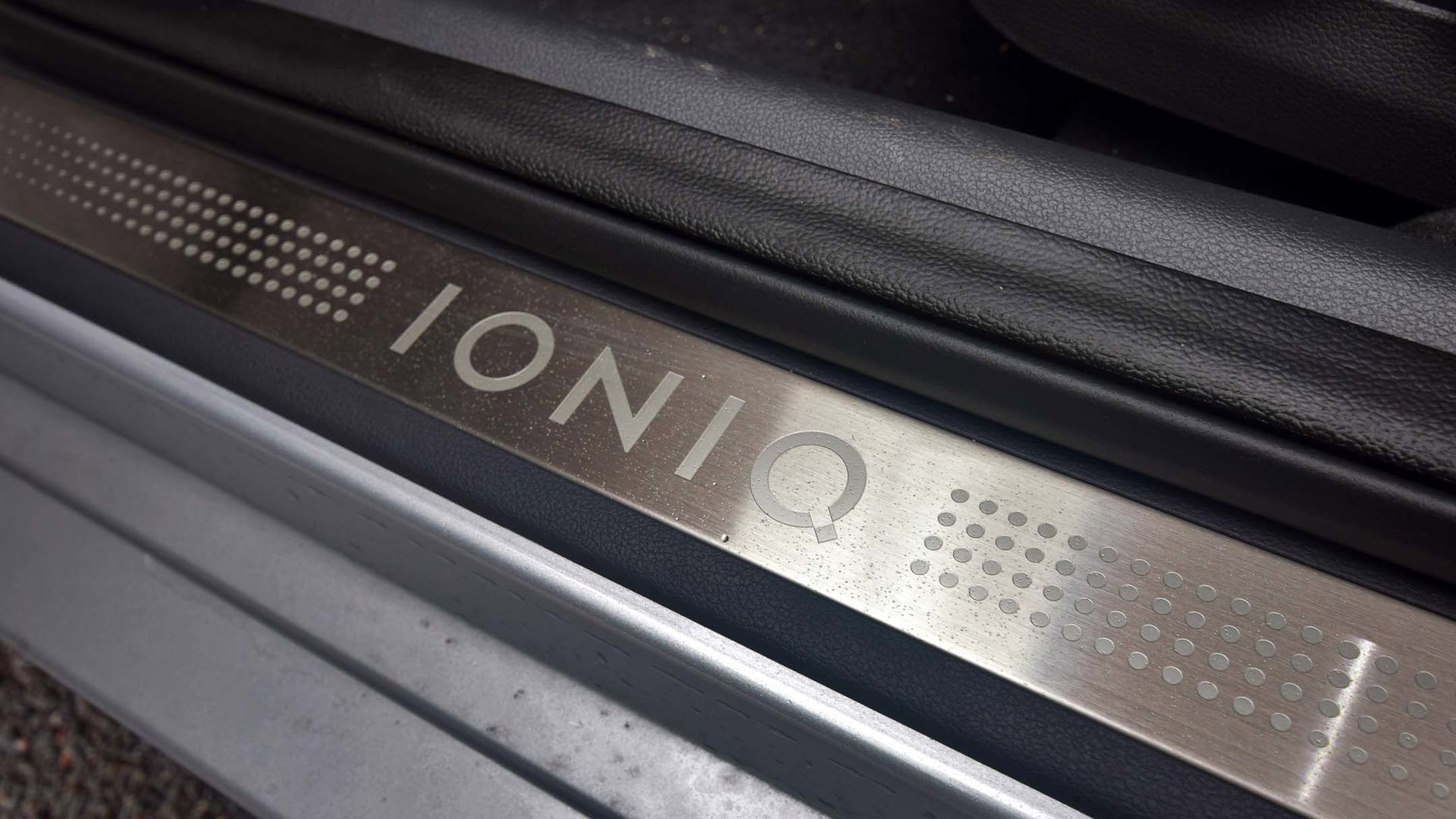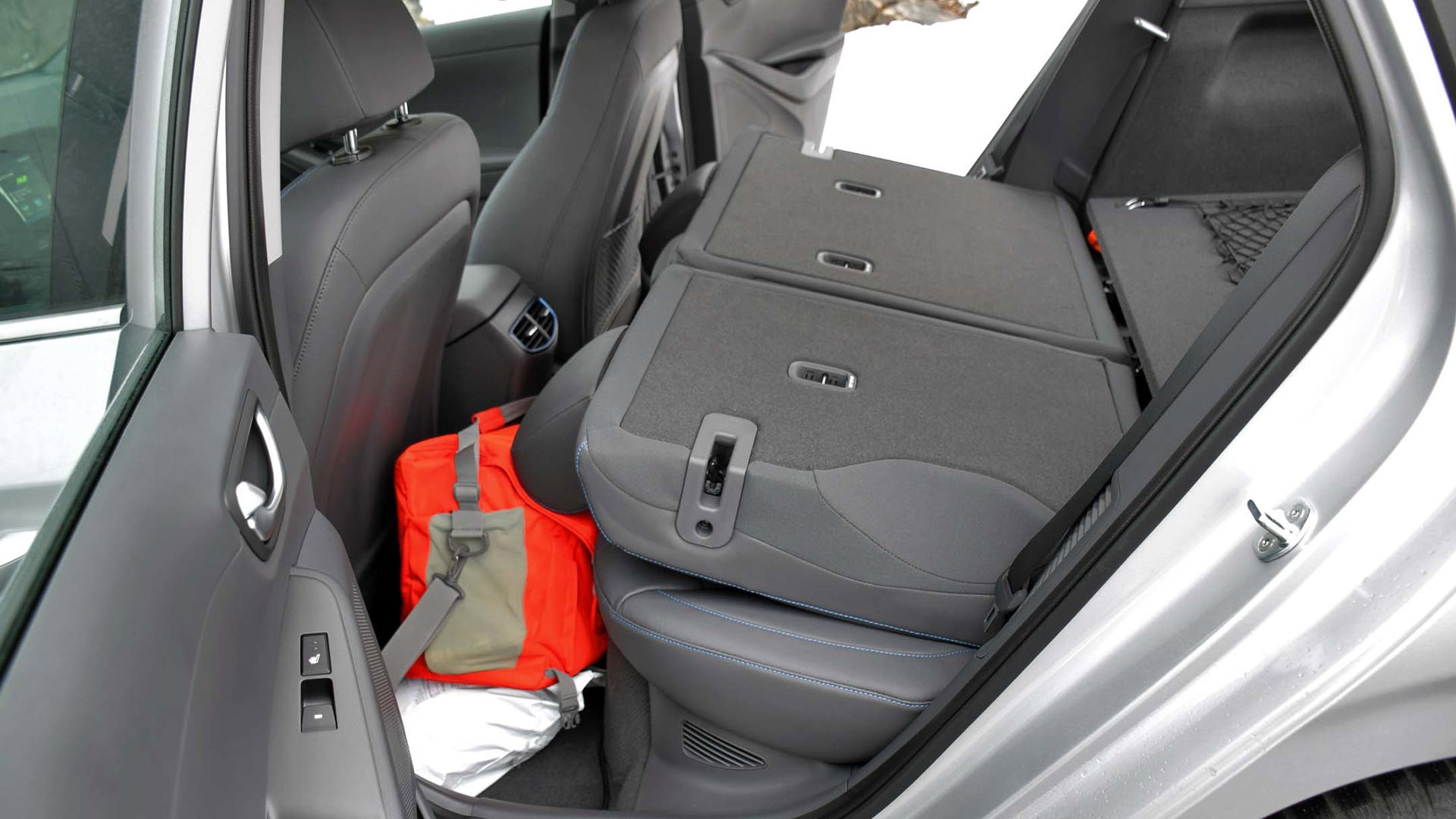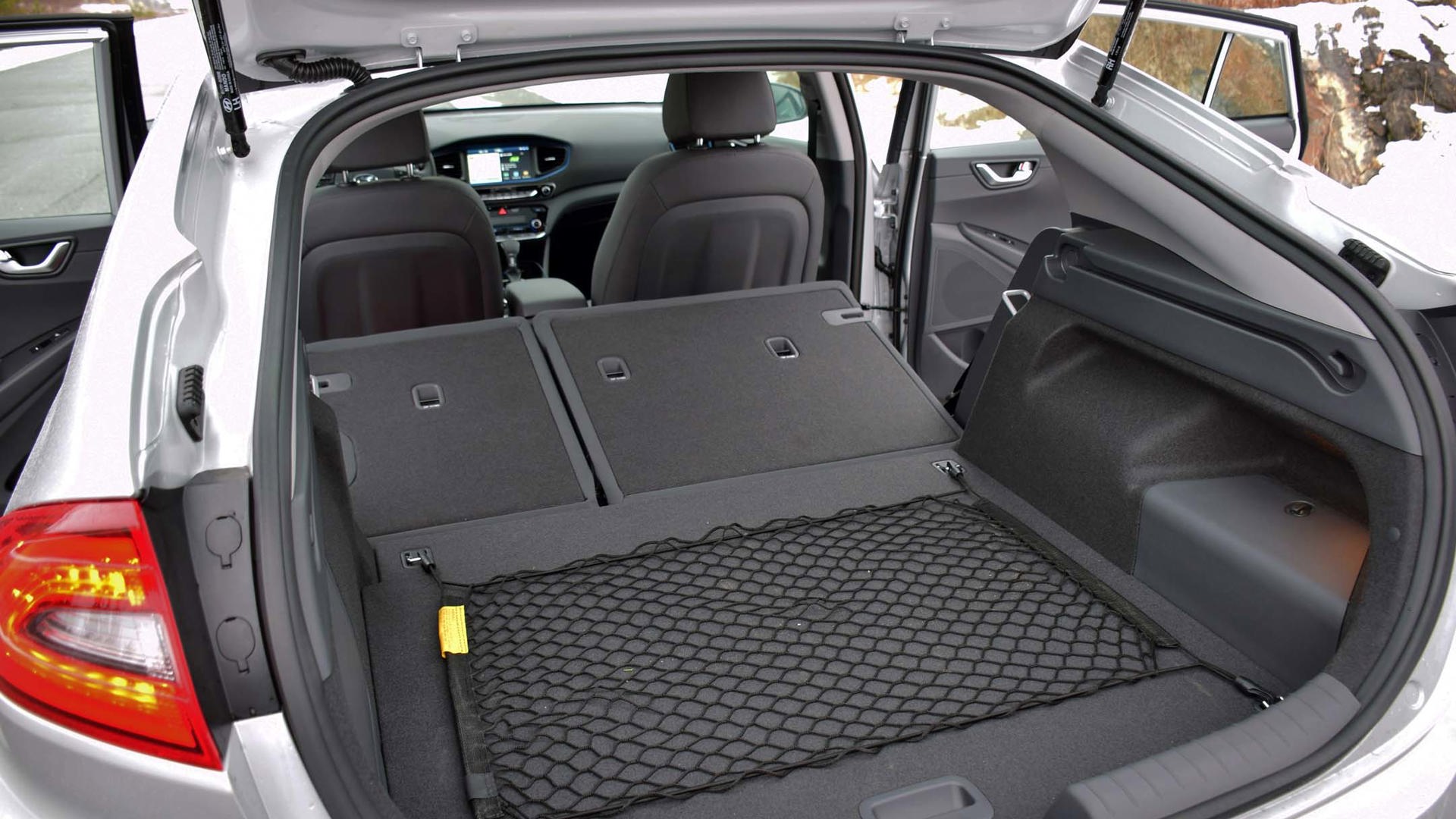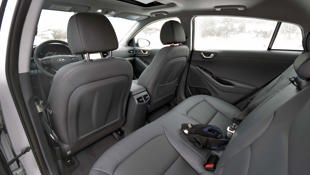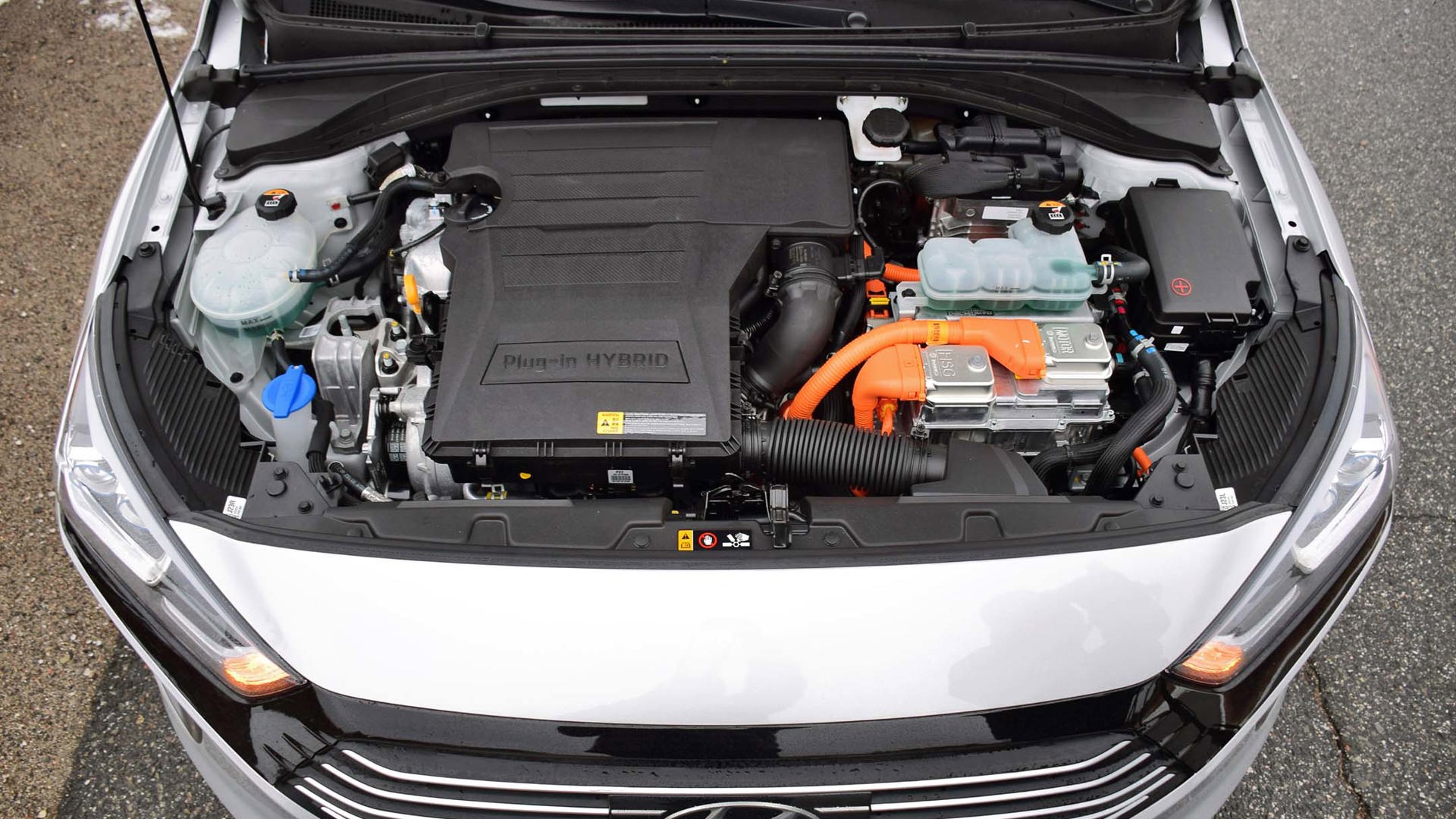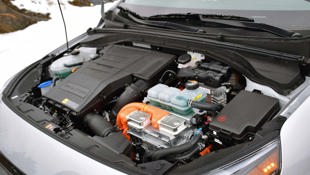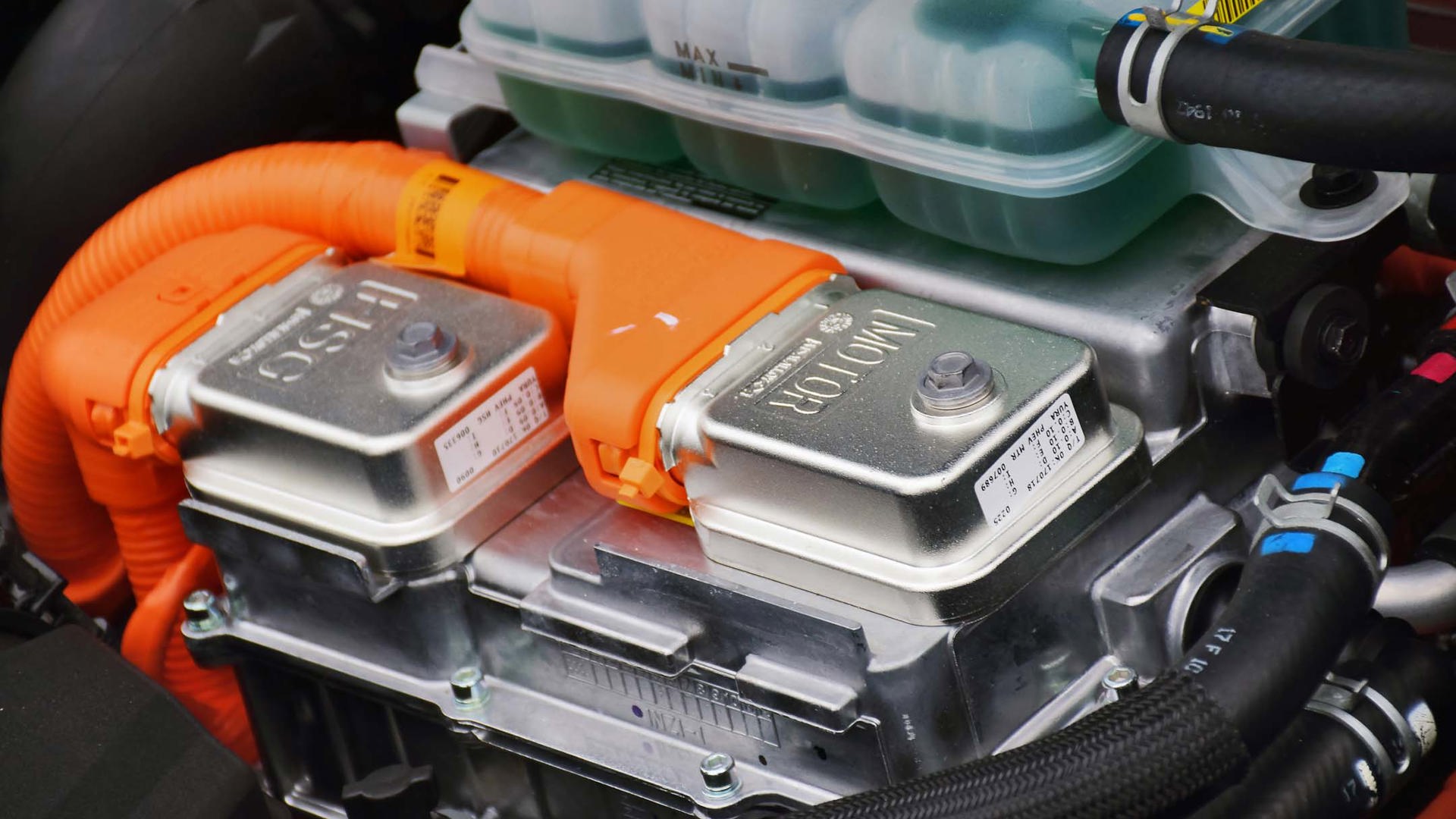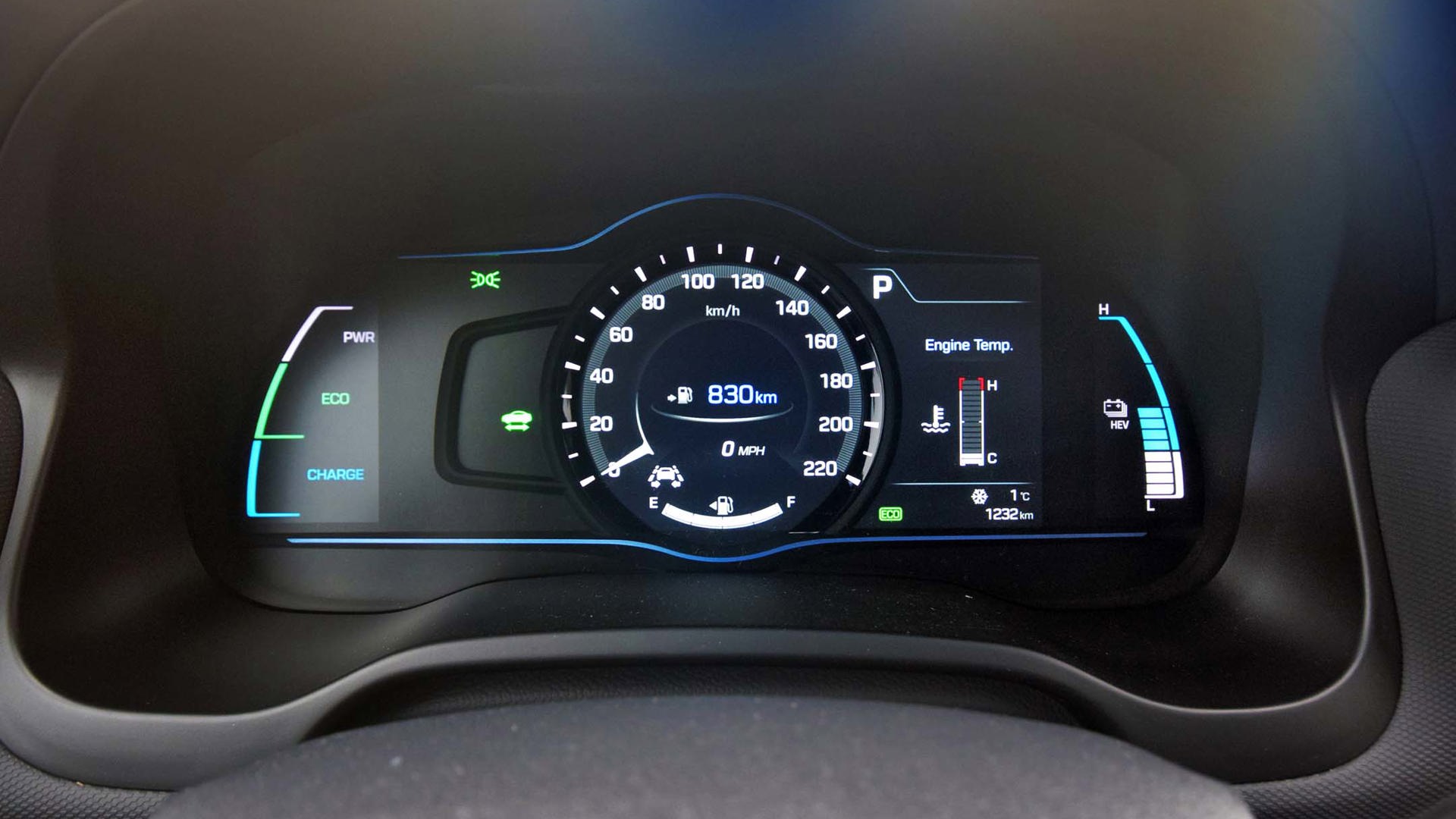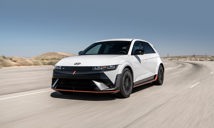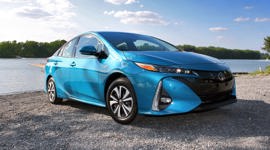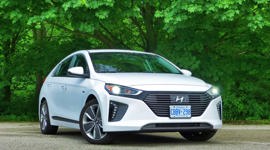 AutoTrader SCORE
AutoTrader SCORE
-
STYLING7/10
-
Safety8/10
-
PRACTICALITY8/10
-
USER-FRIENDLINESS8/10
-
FEATURES9/10
-
POWER7/10
-
COMFORT8/10
-
DRIVING FEEL8/10
-
FUEL ECONOMY9/10
-
VALUE8/10
It’s a tempting thought: virtually never visiting the gas station, unless you’re jonesing for some beef jerky, or need to pick up a pack of Peter Jacksons for your mother-in-law.
First-time PHEV drivers will be thrilled that, mostly, there’s nothing different about driving, living with, or operating this machine.
Pick the right Hyundai Ioniq variant, and the reduction (or total elimination) of gas station visits is a distinct possibility.
The recently launched Ioniq family gives Hyundai’s latest electric technologies a place to live, with each Ioniq offering a delicious combination of the latest in electrified powertrain tech for minimal, or zero, use of gasoline. Each Ioniq also gives shoppers an alternative to the Toyota Prius, which dominates the landscape in this market.
Shoppers pick the Ioniq of their choice from a three-item menu, with unique, model-defining powertrains on offer in a single body style.
There’s the Ioniq Hybrid, which, as hybrids do, blends the efforts of a small gasoline engine and electric motor, the latter powered by an on-board battery. There’s no plugging in the Ioniq Hybrid, since all electric power is generated on board.
There’s also the Ioniq Electric, or Ioniq EV (Electric Vehicle), which has no gasoline engine. This one can do about 200 kilometres on a single charge, which you replenish by plugging into an outlet. The Ioniq Electric never goes to the gas station.
Finally, there’s the Ioniq Electric Plus, a plug-In hybrid vehicle (PHEV), which is the subject of this review. It lives between the Ioniq EV and the Ioniq Hybrid; to avoid confusion we’ll refer to the Electric and Electric Plus as EV and PHEV, respectively.
About seven hours of charging via a normal 110-volt household outlet enables a roughly 47-kilometre all-electric range, at speeds up to 120 km/h. Once that’s depleted, the Ioniq PHEV runs like an Ioniq Hybrid, as above. In the Ioniq PHEV, a full battery and a full tank mean you’re good to go for hundreds and hundreds of clicks of cruising.
Here’s an oversimplified way to understand how a plug-in hybrid like this one works: it’s like a regular hybrid, but with an extra battery. That extra battery is charged up via plugging in, and is used solely for powering longer-distance electric driving. Most standard hybrids can drive a kilometre or two on stored electricity. A plug-in hybrid like this one, with its extra battery, can drive several dozen.
That makes the Ioniq PHEV a great way to take in an EV driving experience, without having to be tethered to the nearest recharging infrastructure – which, in a Northern Ontario locale like mine, is virtually non-existent. Regardless of whether you plug the Ioniq PHEV often or rarely, you’ll never be stuck on the roadside with an empty battery.
And aside from the curious styling deployed for maximum aerodynamic slipperiness, and the fact that you plug it in from time to time, the Ioniq PHEV is, basically, just a regular mid-size car – and a pretty good one, too.
It’s easy to get in and out. Front passengers are surrounded by plenty of storage cubbies for organization of smaller items, and no fewer than three charging points and a wireless smartphone recharging pad are within reach. There’s a good forward view. The LED headlights offer above-average performance as mid-size cars go, too.
Parking is easy, thanks to feather-light low-speed steering, decent outward visibility, and a clear and vivid parking camera. Heck, even though the cargo area is fairly shallow (the battery eats space beneath), it’s wide and flat and can be expanded via nearly flat-folding rear seatbacks. There’s plenty of room for a two-person weekend camping trip’s worth of gear, a big-buck Costco run, or the like.
Rear door openings are a tad snug, but rear seat space is adult-friendly for those up to average height. Legroom is relatively generous, but headroom will disappear most quickly for larger guys and gals.
The nicely loaded tester included heated leather seats, a punchy Infinity stereo, automatic lights and climate control, radar cruise, lane-keeping assist, blind-spot monitoring, a sunroof, and more. Also included was the must-have Android Auto, for handsfree everything.
Moreover, and perhaps more importantly, the Ioniq PHEV’s cabin is normal. Everything looks, functions, and is located as expected. Ignore the “Plug-In” badge and the two fuel doors (one for gas, one for volts), and you’d hardly know this wasn’t just a regular little hatch.
After all, shoppers want more options to save fuel, and they don’t want to give anything up to achieve it. That’s evidenced throughout the Ioniq PHEV – including in the highly conventional cabin, and more so, in how it drives.
On the highway in strong winds, the Ioniq PHEV feels sturdy, heavy and planted – not like a four-wheeled sailboat. Noise levels are on par with most mid-size cars, and the steering heavies up a measure at higher speeds, helping the Ioniq clamp into its lane, even if the overall feel at the wheel is fairly vague.
Around town, lightened steering improves maneuverability, and the ride is a dash firmer and sportier than expected, but with a layer of softness at the edges that prevents it degrading into jarring discomfort. The Ioniq PHEV seldom bangs into bumps, and the suspension feels durable, not like it’s made of boiled newspaper. Ride quality is consistently robust on all but the most poorly maintained roads. All said, I appreciated what felt like a touch of extra fine-tuning to make the Ioniq feel stable and substantial. It’s a mid-size car that rides and feels like a bigger, heavier one.
Performance is on par with most mid-size cars, though 195 lb-ft of on-demand torque enhances low-rev responsiveness. Use of the all-electric mode sees reduced performance, since the gas engine doesn’t help to propel the car here unless full throttle is applied. As such, acceleration is adequate, maybe a touch better, for keeping up with the flow of city traffic.
But first-time PHEV drivers will be thrilled that, mostly, there’s nothing different about driving, living with, or operating this machine.
Still, there are a few things to know.
The first relates to the pedals – which themselves are just fine, though the responses from each require a little getting used to.
The default throttle setting is too numb, which helps save fuel but requires great big bootfuls of pedal input to get the car moving in any sort of hurry. Drivers coming into an Ioniq PHEV from something sportier or more powerful will find the throttle frustratingly lazy – though the setup is perfect for laid-back drivers who appreciate the car helping them to achieve better mileage. To your writer, it felt like the Ioniq had a hangover.
There’s a Sport mode, which engages a hair-trigger throttle map to jack responsiveness, and turns the central digital speedometer into a rev counter for feistier motoring. In this mode, the throttle is too sensitive, difficult to operate smoothly, and will result in additional fuel use.
There’s no proverbial perfect bowl of porridge for the Ioniq’s throttle. You’ll get used to the choice between syrupy and super-sensitive, though you’ll probably wish for a regular mode, somewhere in between.
The brake pedal requires a little getting used to as well. Hybrid vehicle brakes work differently from regular brakes, and often feel imprecise, numb, and tough to modulate during light braking. The tester’s brakes perform well when called upon for a sudden stop, and pedal feel improves the harder they’re worked. Still, and again, there’s a bit of getting used to the feel required.
Finally, the climate control system. I’m always cold. Always. And so I often cranked the heat on my November test drive, which typically runs the gas engine to help heat the cabin. Here, the engine runs for parts of drives that would have otherwise been fully electric. Often, you literally hear the engine turn on and off in sync with the climate control when it’s freezing outside. Leave the climate control off, bundle up a little, and let the heated seats and steering wheel do their job, and you’ll burn less gas.
The cold weather was one factor working against my test’s fuel consumption average. Others included the installed winter tires, and the fact that much of my driving was on the highway at a good clip – the exact opposite to the sort of driving where cars like this achieve superior mileage.
With nightly recharging on 120 volts, and many virtually fuel-free trips around town, I drove 1,370 kilometres and used 59 litres of fuel. That’s 4.3 L/100km, measured by hand.
This ties a non-plug-in Toyota Prius for where and how I drive, though the Prius was a summer test drive on factory rubber with fewer factors working against it. The Ioniq used about 1.0 L/100 km less than the smaller Toyota Prius c, also a summer test drive. Driven in similarly wintry conditions, a Honda Fit used a full 4.0 L/100 km more than the Ioniq tester, and a Ford C-Max Energi used a full 1.0 L/100 km more.
Cross-shopping? Note that Prius has a slightly softer-set ride that some drivers will find more comfortable, as well as superior headlights that are among the best I’ve ever used on this side of about $50,000.
Ultimately, the Ioniq Electric Plus PHEV is a great way to take in the experience of all-electric driving, with conventional car range, and all from a package that stands out as a solid all-around product, driveline and efficiency aside.
Pricing for a loaded unit like this tester lands at about $36,500 – though government rebates and incentives may knock that back by several thousand or more. In BC, there’s a $2,500 rebate available, $4,000 in Quebec, and up to about $8,400 in Ontario, based on its 8.9 kilowatt-hour lithium-ion battery.
| Engine Displacement | 1.6L |
|---|---|
| Engine Cylinders | 4 |
| Peak Horsepower | 164 hp |
| Peak Torque | 195 lb-ft |
| Fuel Economy | 4.4/4.6/4.5 L/100 km cty/hwy/cmb; 2.0 Le/100 km, 17.7 kWh/100 km |
| Cargo Space | 650 L |
| Model Tested | 2018 Hyundai Ioniq Electric Plus |
| Base Price | $36,499 |
| A/C Tax | $100 |
| Destination Fee | $1,705 |
| Price as Tested | $38,304 |
|
Optional Equipment
None
|
|
